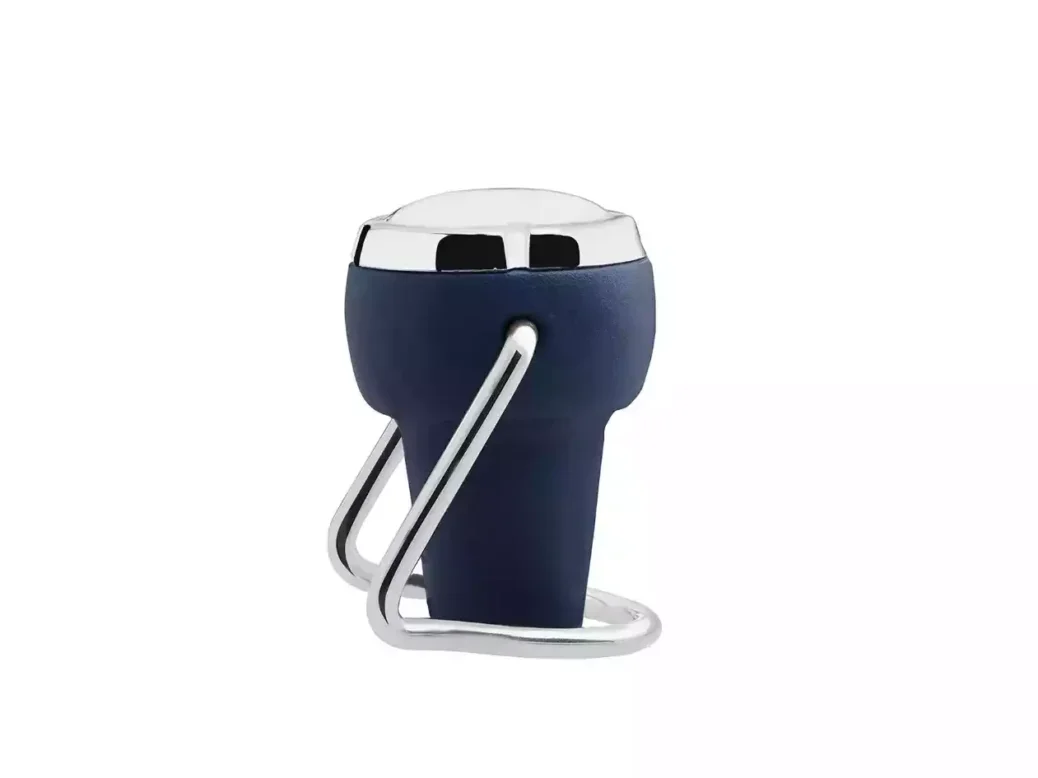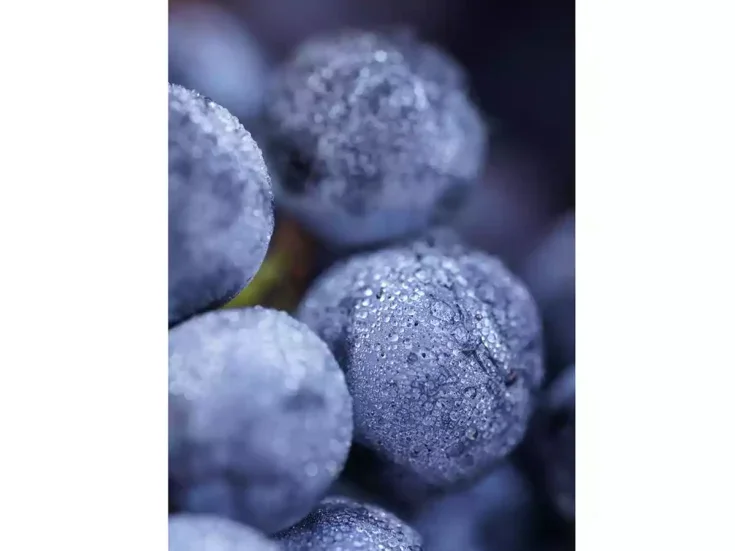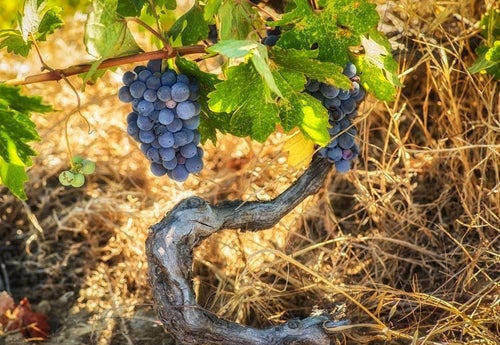
In Kiboni’s Corky 2.0, Tom Stevenson thinks he may have found the best closure for re-sealing open bottles of sparkling wine.
Although you will find at least one open magnum of top-quality bubbly in my wine fridge almost every day of the week, I sometimes forget to use a closure, but as I confessed in WFW 83, I don’t know why I even own one. The fact is, however, that I do—and I have recently found the best closure.
Check out that earlier column to see why a closure does hardly anything to stop the loss of CO2 from the wine itself. What it will do, though, is prevent any unwanted food smells lurking in the fridge from tainting the wine. I use a wine fridge, and there is no danger of that happening, so a closure is unnecessary for me. Yet I still use one. Habits die hard, I suppose.
The only sort of closure that can withstand the pressure that builds up after resealing a sparkling wine is one that clasps over the annulus or bague on the neck, not those that depend solely on a slight bulging of the bung. They come in two types: single-lever or double-clasp and some work better than others, depending on how effective the bung is and how securely the closure attaches to the bottle. Kiboni’s Corky 2.0 is not only superior in mechanical design to all the otherwise perfectly functional single-lever and double-clasp closures, but it transcends the status of a mere tool to achieve the prominence of a work of art. If aesthetics mean little to you, then fair enough—you don’t need to read any further. However, if you regularly use sparkling-wine closures and believe that it is preferable for even everyday objects to possess a sense of beauty, then there is only one choice of closure for you, and that is the Corky 2.0, even though Kiboni’s choice of the word Corky is rather kitsch for something of such class and style.
Never heard of Kiboni? Take a look inside the lever of many of the best single-lever closures on the market, and you might well see the Kiboni name. You will also find Kiboni on branded single-lever plastic closures from Champagne houses like Charles-Heidsieck, Laurent-Perrier, and Bollinger, but they look rather cheap and clunky when compared even to the original Corky, let alone the Corky 2.0.
Four years asleep
Kiboni is a German manufacturer of household and garden items. In the beginning, the company worked closely with award-winning Danish designer Nicholai Wiig-Hansen, which accounts for the minimalist Scandinavian appearance of so many of its products. Kiboni makes extensive use of a thermoplastic elastomer (TPE) for all sorts of household products, including the mushroom-shaped bung that is key to the functionality of both the original and 2.0 version of the Corky closure. This TPE is a polythene-based thermoplastic polymer that has the durability of plastic but the look and feel of rubber without any of its associated aromas. The Corky’s TPE bung feels solid yet soft, grippy, and pleasing to handle, enabling it to give an exceptional seal. The stainless-steel single lever provides the best fit to the annulus I have ever encountered, and this in turn gives the user confidence that it will remain in place however much pressure builds up.

The original Corky was first sold as long ago as 2015 and was designed by Wiig-Hansen, but it was in 2020 that the CEO, Kishwar Zuberi, made a change that revolutionized this closure by adding a classic metal plaque, so that it had not only the mushroom shape of a Champagne cork but the capsule too. The Corky 2.0 has two types of capsules: matt gold and, my favourite, shiny chrome (because it looks like highly polished solid silver). This change had a magnitudinal effect on the product. It was already the most mechanically secure sparkling-wine closure on the market, but Zuberi’s touch transformed it into an objet d’art. This was a game-changer as far as I was concerned. How could I buy any other closure after seeing and using such a gorgeous yet functionally superior device?
From a sparkling-wine producer’s point of view, the genius of the plaque on the Corky 2.0 is that it offers the perfect opportunity for own-branding. Four years down the line, you might expect that every Champagne house with any taste would be equipped with these beautiful closures, yet very few are. It is bad enough that it has taken me four years to wake up to the best and smartest sparkling-wine closure on the market, but it would appear as if the underachieving marketing guys in Champagne are still fast asleep. You are more likely to come across the Corky 2.0 in Italy, Austria, or Germany than in France (Camilucci in Franciacorta, Prati di Meschio and Soligo in Prosecco, Hofer in Austria, Schloss Vaux Sekt in Germany).
For the sake of full transparency, I purchased three Kiboni Corky 2.0 closures for the full retail price and was not asked or paid to write a review. I paid £7.99 per closure plus shipping from Wine and Barrels. Although I felt that was very expensive when I ordered, I was smitten by the photo and not disappointed when I received the real thing. If you want 100, the price drops to €1.80 per closure plus shipping. There is a minimum order of 500 for own-branding, but the price varies tremendously according to what the branding consists of to give any sort of sensible indication.






